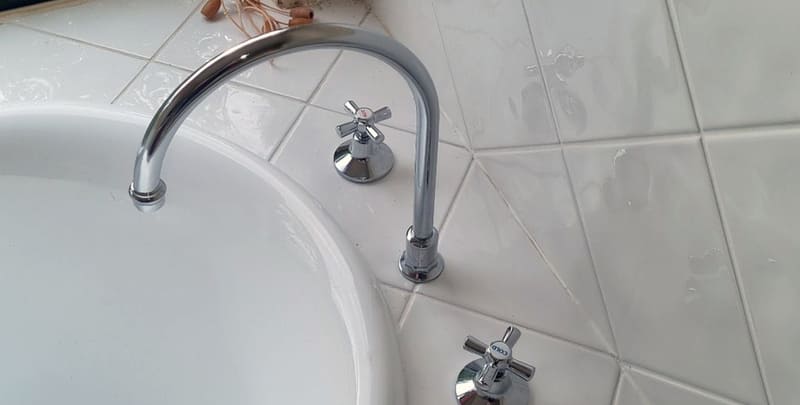Bathroom Plumbing Tips and Tricks: Keeping Your Fixtures in Top Shape

This guide will provide you with a comprehensive set of tips and tricks to help you keep your bathroom plumbing in top shape. From regular cleaning techniques to troubleshooting common issues, we’ve got you covered.
You’ll learn how to prevent clogs, detect leaks, maintain toilet functionality, and address common problems such as low water pressure and running toilets. We’ll also provide you with a range of DIY methods and guidance on when it’s best to consult a professional plumber.
Bathroom Plumbing Maintenance Tips
Regular Cleaning
Your kitchen and bathroom fixtures are exposed to various elements and substances daily, making regular cleaning essential to keep them in top shape. Cleaning helps maintain the aesthetics and prevents build-up and potential damage.
Recommended cleaning tools and products: Use mild, non-abrasive cleaners that are suitable for specific fixtures. For example, use a bathroom cleaner for porcelain surfaces and a stainless steel cleaner for faucets and showerheads.
Cleaning techniques for different bathrooms plumbing: Scrub the toilet bowl with a toilet brush and cleaner, wipe down the surfaces of sinks and countertops, clean the wall, shower walls, door, window and glass doors using a non-abrasive cleaner, and regularly clean bathtub surfaces with a suitable cleaner.

Preventing Clogs
Proper disposal of waste: Avoid flushing anything other than toilet paper and human waste. Dispose of items like dental floss, cotton balls, wipes, and feminine hygiene products in the trash to prevent clogs.
Using drain strainers: Install drain strainers in sinks, bathrooms, laundry, showers, and tubs to catch hair, soap scum, and other debris that can cause clogs. Clean the strainers regularly to maintain their effectiveness.
Regular drain maintenance: Flush drains with hot water regularly to prevent build-up. If you notice slow drainage, use a plunger or a drain snake to remove any clogs. Avoid using chemical drain cleaners, as they can damage pipes over time.
Checking for Leaks
Identifying signs of leaks: Look for water stains, dampness, or musty odours around fixtures and walls. Check for dripping sounds or water pooling near the base of toilets and sinks.
Fixing common leak issues: Repair leaky faucets by replacing worn-out washers or O-rings. Fix toilet leaks by adjusting or replacing the flapper valve or fill valve. For more severe leaks, it’s best to consult a professional plumber.
Importance of early detection: Promptly addressing leaks is crucial to prevent water damage, mould growth, and potential structural issues. Regularly inspect your kitchen and bathroom plumbing to catch and fix leaks early on.
Maintaining Toilet Functionality
Proper flushing techniques: Teach everyone in your household to use the toilet properly, avoiding excessive flushing or flushing items that should be disposed of in the trash. This reduces the strain on the plumbing system and minimises the risk of clogs.
Addressing toilet tank issues: Regularly inspect the toilet tank for any malfunctions. Check the water level and adjust the float if necessary. Replace any worn-out or broken components, such as the flapper or fill valve, to ensure proper functionality.
Replacing faulty components: If your toilet continues to have issues, such as running or insufficient flushing, it may be necessary to replace specific components. Consult a professional plumber if you need clarification on the process.
Troubleshooting Common Bathroom Plumbing Issues
Low Water Pressure
Identifying potential causes: Low water pressure can result from various factors, including mineral deposits in the aerator or showerhead, water supply issues, or pipe blockages. Start by checking the aerator and showerhead for debris and clean them if necessary.
Steps to improve water pressure: If cleaning the aerator and showerhead doesn’t resolve the issue, check other faucets in the house to determine if it’s a localised problem. Consult a plumber to diagnose and fix the underlying cause, such as pipe blockages or supply line issues.
Slow Draining Sink or Tub
Causes of slow drainage: Slow draining can be caused by hair, soap residue, or other debris clogging the drain. It could also indicate a more significant plumbing issue, such as a blocked or partially collapsed pipe.
Clearing clogs and obstructions: Start using a plunger to dislodge the clog. If that doesn’t work, try a drain snake or a homemade mixture of baking soda and vinegar followed by hot water. For persistent or severe clogs, seek professional assistance.
Running Toilet
Diagnosing the problem: A running toilet is often caused by a faulty flapper valve or a problem with the fill valve or overflow tube. Listen for running water or check if the bathroom fills up even after flushing.
Fixing common running toilet issues: Adjust the chain length or replace the flapper valve if it’s not sealing properly. If the fill valve or overflow tube is the problem, consult a plumber or replace the faulty components if you’re comfortable doing so.
Leaking Tap
Identifying the source of the leak: Determine if the leak is coming from the faucet spout or the base. Turn off the water supply to the faucet before proceeding with repairs.
Repairing or replacing faucet parts: For a dripping spout, replace the worn-out washers, O-rings, or seals. The leak at the base may require tightening or replacing the tap’s mounting nuts or gaskets. If you’re unsure, it’s best to consult a plumber. You can contact Upside Down for assistance and help from an expert plumber.
Bathroom Maintenance for Optimal Functionality
The Importance of regular maintenance for bathroom plumbing: By implementing these tips, tools, ideas and tricks, you can prolong the lifespan of your new bathroom and plumbing fixtures and supplies, prevent costly repairs, and maintain optimal functionality.
Recap of crucial information, tools, ideas and tricks: Regular cleaning, preventing clogs, checking for leaks, and maintaining toilet functionality are essential tools for keeping your new bathroom and plumbing supplies in top shape.
Please note: This information is provided for advice purposes only. Regulations differ from state to state, so please consult your local authorities or an industry professional before proceeding with any work. See our Terms & Conditions here.